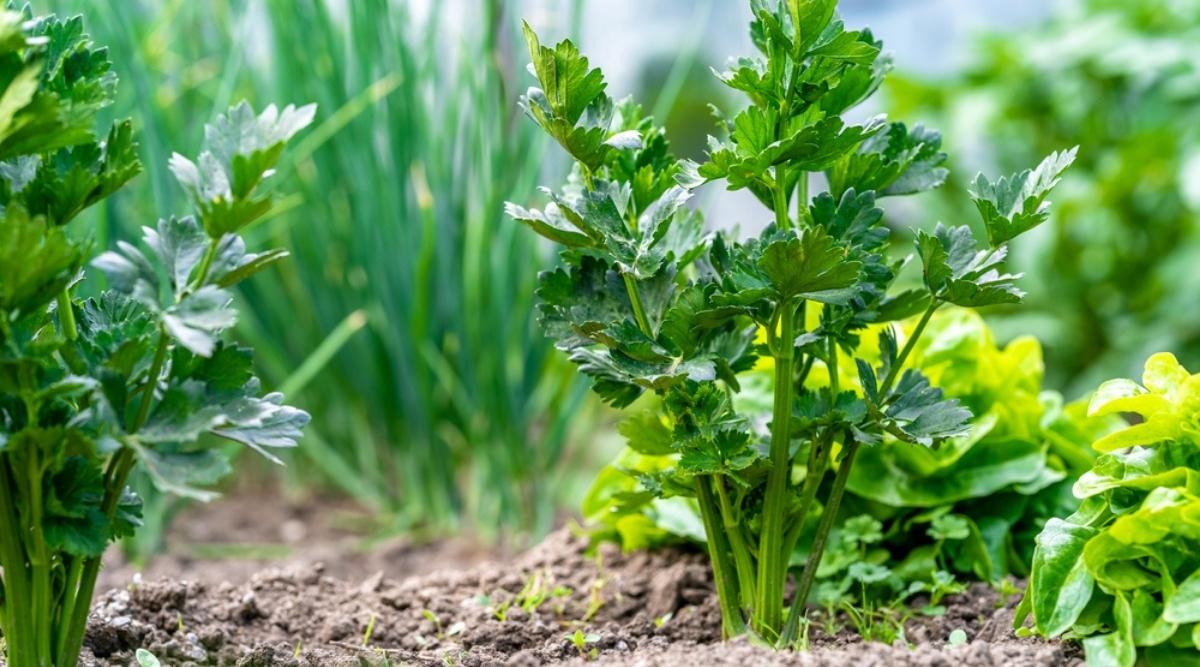Table of Contents
Is growing celery the most challenging task and requires high maintenance? Many people ask this question while they grow celery. It is a unique plant with a long growing season but is very sensitive to heat and cold. However, there is not much difference in flavour between store-bought and home-grown varieties. Hence, more gardeners take it as a challenge and harvest them in their gardens.
This long-season crop thrives in cold temperatures and may take up to 140 days to mature. However, shorter-season cultivars are also available. Celery is mainly a hardy biennial. Yet, it is usually cultivated annually since the stalks are only edible once they have reached 12 to 18 inches. As the celery seeds are small, it is pretty tricky to harvest.
Therefore, you must follow the proper steps to grow them to achieve desired results.
Steps to Grow Celery Plant
The process of planting, growing, and harvesting celery is outlined here.
Step 1: Concentrate on the Planting Procedure
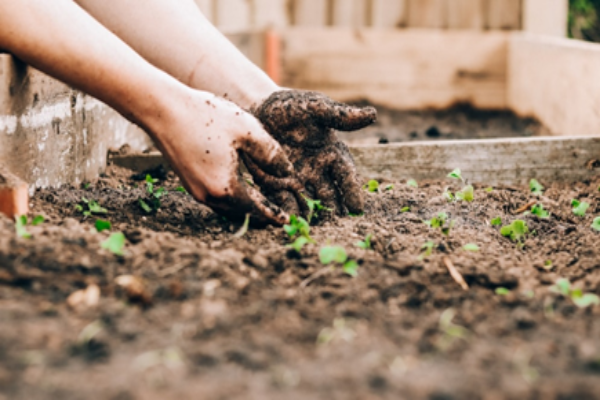
Choose a spot that gets at least 6-8 hours of sunshine a day (full sun).
Celery thrives in lush, fertile soil. Use a garden fork or tiller to aerate the soil to a depth of 12 to 15 inches. Then incorporate 2 to 4 inches of compost, manure, or 5-10-10 fertiliser. Soil pH between 5.8 and 6.8 is ideal for growing celery in the UK. If you are unsure about your soil’s pH level, you should get it tested. Celery thrives on soil that holds onto moisture and doesn’t dry up too fast. Since wild celery prefers soggy soil, keep it wet to promote constant growth.
Step 2: Learn When You Should Plant Celery
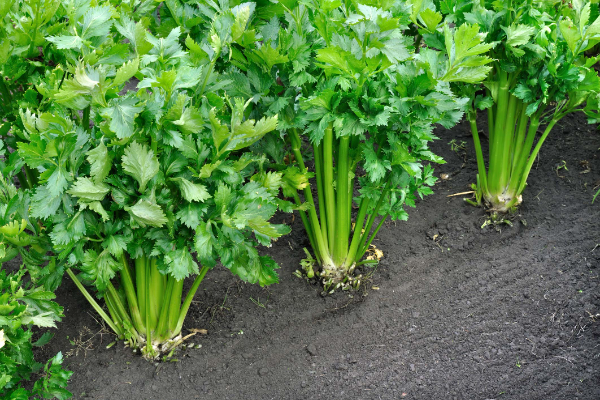
Celery has a long growing season; thus, planting the seed indoors is the best option.
- Ten to twelve weeks before your final spring frost date, you may begin sowing seeds like Badia Celery Seed Whole for a spring harvest.
- Start sowing seeds 10 to 12 weeks before the first autumn frost date so that you may transfer seedlings.
Step 3: Time to Plant Seeds of Celery
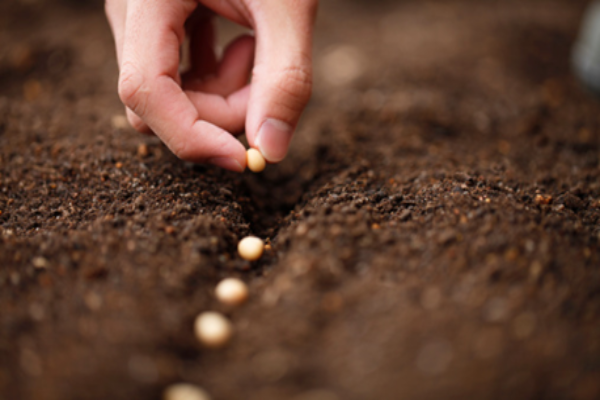
- The night before planting, immerse the seeds in warm water. It will hasten the process of seed germination. The celery seeds are tiny, so you must check them closely.
- Firmly but gently pack high-quality seed starting mix into empty seed flats or pots.
- Seeds should be pressed into seed-starting soil, not covered for optimal germination. Gently tapping the packet over the surface of the potting mix and watching as the seeds fall is the most effective method of sowing the seeds. It will be best if they can naturally space around an inch.
- Use plastic wrap over seed-starting trays or pots to keep the moisture intact. It takes roughly a week for seeds to germinate, but often it might take up to three weeks.
- Set a fluorescent grow light three inches above your seedlings for 16 hours daily (plants also require time in the dark).
- Temperatures should be kept between 60-65°F (15 and 18°C) day and night for growing celery.
- Use mist regularly.
- When the seedlings have reached a height of 2 inches, you may transplant them into individual peat pots or deeper flats filled with fresh potting soil. A minimum of 2 inches of space should be left between each plant for growing celery in the best way.
- Seedlings should be hardened off for transplanting by spending a few hours outdoors (in a shady area away from direct sunlight) with gradually decreasing watering.
Step 4: Outdoor Transplanting
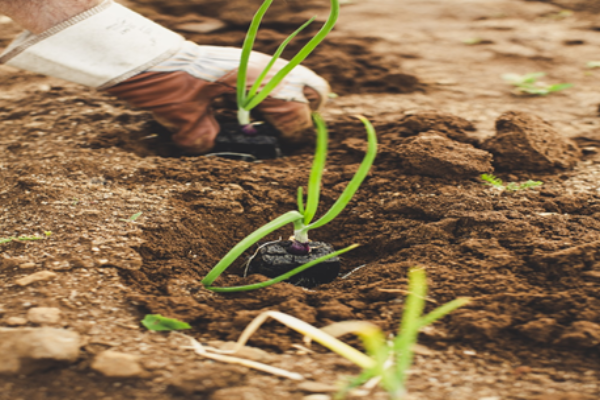
- You may start transplanting your outdoor celery crop like Dhillons Celery Seedwhen the soil is at least 50°F (10°C). Also, the night temperature doesn’t drop below 40°F (4°C). Bolting might occur if the weather is too cold soon after planting.
- Separate seedlings by 8-10 inches before planting.
- Provide sufficient water to the seedlings for growing celery appropriately.
Step 5: Growing Celery in the Right Way
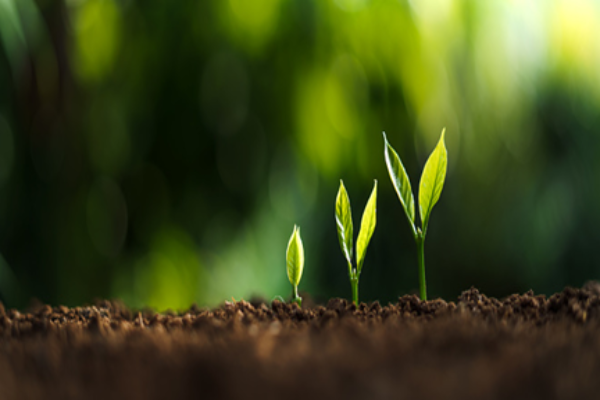
There are three main requirements for healthily growing celery:
- Temperatures below freezing are ideal since celery dries up in the heat.
- Constant water; dried-out roots will produce tiny, stringy, stiff, and/or hollow stalks.
- Organically fertile topsoil is ideal since the plant’s roots only go a few inches deep.
Instructions to Grow Celery:
- You must water the plants regularly during the growing season, particularly during extreme heat and dryness.
- Use row coverings to protect crops from pests during the first four to five weeks.
- Mulch around plants when they are 6 inches tall to help retain soil moisture and reduce root heat.
- Compost should be sprinkled as a side dressing for growing celery. Comfrey pellets and used coffee grounds work wonders when worked into the soil in the spaces between plants.
- Apply a 5-10-10 fertiliser as a side-dressing once per plant every two months throughout the second and third growing seasons. Ensure to keep the fertiliser about 3 to 4 inches away.
- Because of the plant’s thin roots, you must be careful while weeding around celery.
- To prevent celery from spreading as it grows, tie the individual stalks together.
- The stems of trenching types should be earthed up after they reach a height of one foot. Then, the soil should be banked up roughly three inches (8 cm) until further hilling is impossible.
- To remove any bitterness and get a light green colour, blanch the stalks by wrapping or covering them. Try using brown paper bags, cardboard (fastened with old nylon stockings, twine, or vegetable wires), milk containers (with the tops and bottoms cut off), or anything else you can find that will block the light. The celery leaves should not be covered.
Step 6: Harvesting the Celery
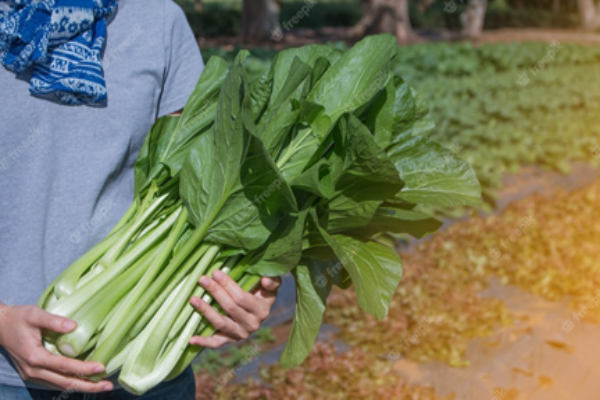
- Celery may be gathered from late summer through early fall or until the first strong frosts kill the plant. However, it is a biennial and dies back throughout the winter. But, in warmer regions, it may survive and produce a few stems here and there before bursting into bloom in the spring.
- While complete plants may be harvested, getting the most out of your plants requires occasional stem trimming or plucking.
- Celery harvesting focuses mainly on the above-ground stalks.
- Gather the stalks whenever it suits you. The taste of young celery is identical to that of adult celery.
- Strip stalks of their outer leaves first. When the stalks are approximately 8 inches tall, you may start picking them.
- If you build up the soil around the growing celery to keep the temperature optimal, you may keep it in the garden for up to a month. It is because celery may tolerate frost damage up to a certain point, but repeated frosts will kill the plant.
Tip: the darker the stalks, the greater nutrients they hold. Colour affects texture. So, the dark green stems are stiffer.
Essential Things to Keep in Mind When Taking Care of Celery
Despite its apparent connection with hearty winter stews, celery is a crop that cannot tolerate extreme temperatures. You must focus on growing celery inside for several reasons. First, consider sowing the seeds indoors to avoid the risk of frosting. It will be best to harvest celery in early fall or late summer. You can preserve the plants for up to two months in a cool, dark place like a refrigerator or root cellar.
1. Adequate Sunlight
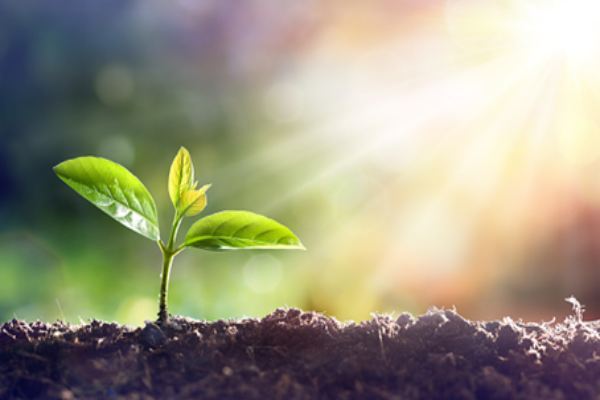
At first, you must select a place with complete access to direct sunlight. It is so because the direct sunshine of 6-8 hours daily is ideal for garden celery cultivation. Do not plant in regions shaded by trees or surrounding buildings in the afternoon. However, enough lighting is vital for all plants. It becomes more crucial when you grow celery from seeds as they require adequate sunlight to germinate properly.
A few people think that excessive sunlight can cause damage to the plant or dry them out. Don’t worry! There is a solution as well. You can quickly cover the plant with fine vermiculite or potting soil layer. As a result, it will keep the moisture intact to save them from drying out.
2. Supply of Water
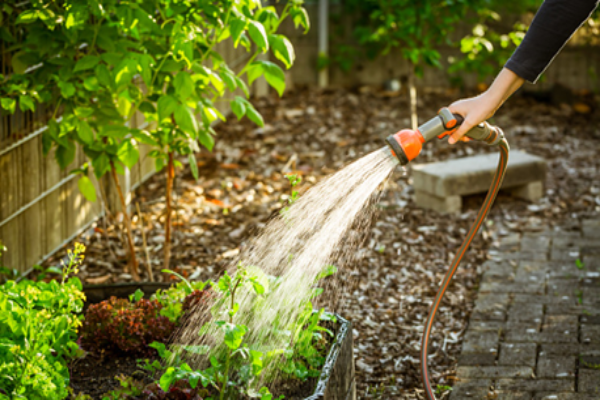
Drought is devastating to celery and causes severe damage to the plants. It’s a plant that has to be constantly watered to ensure it gets the moisture it requires to grow. Celery thrives when watered using soaker hoses or drip lines. Maintaining a soil moisture level of about 1 inch per week by rainfall or irrigation is essential, particularly in hot weather.
Celery plants might experience reduced yields and taste if allowed to dry out at any moment throughout the growing celery season. Dry and short stalks are to be expected. The two most challenging aspects of celery cultivation are temperature and watering. So, water them properly at the right time because water stress can make the stalks stringy.
3. Balance of Soil
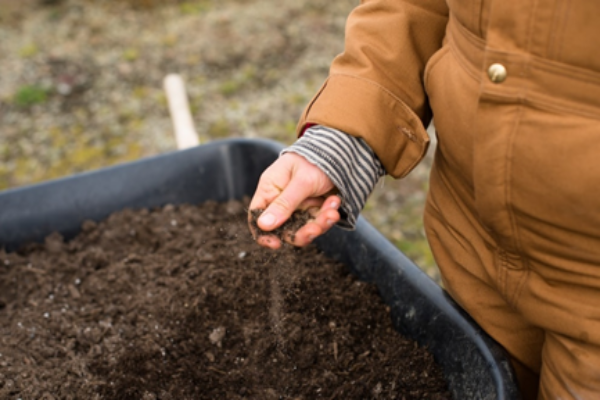
Celery, along with its close relative, celeriac, thrives on soil rich in organic matter and has a good balance of moisture and drainage. Therefore, it is better to amend extensively with organic and high-quality compost, rotting manure, and/or leaf mould prior to planting. In addition, to prevent the celery from being dry, the soil must have a pH ranging from 6.0 to 7.0 and an abundant ability to store water.
So, you must avoid the spaces or areas that will drain out easily. Fertilize the celery plants with fish-emulsion solutions every month throughout the season. First, you must add the fish emulsion and fill the container with adequate water. It will offer nitrogen and organic nutrients, which help the plant from burning.
4. Temperature and Climate

The ideal temperature range is between 60-70°F; however, temperatures between 55° and 80° will also be acceptable. Protecting the plants from temperature swings is vital by using a row cover (during cold) or shade cloth (during too hot temperatures). When properly prepared and using a heat-tolerant or cold-tolerant, fast-maturing type of celery, it is possible to produce celery in practically every growing zone.
Bolting is standard at temperatures below the 50°F, whereas excessive heat makes celery bitter and unappealing. A greenhouse or a row cover may help with the latter problem. The lowest stalks of celery will remain delicate and flavorful if you blanch them using the trenching technique. The lowest stalks of celery will remain delicate and flavorful if you blanch them using the trenching technique. But, you need to wait for some time to blanch them until they grow double in size.
5. Applying Fertiliser
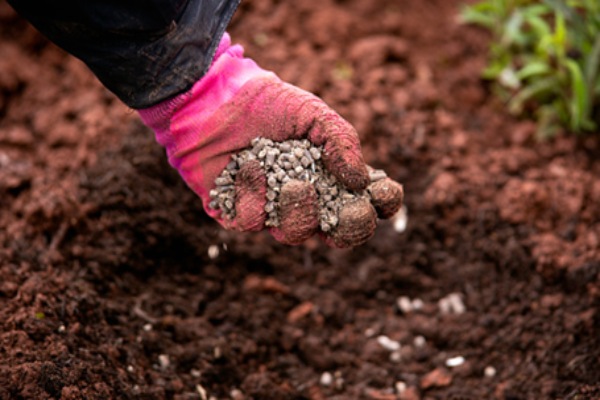
Celery is a strong feeder and so relies heavily on healthy soil. Before planting each season, it is best to cover the soil with a two to four inches deep compost layer. Another option is a high-quality organic fertiliser that may be used for various purposes. Fertigation feedings once every two weeks with liquid fish fertiliser also benefit celery.
Also, do not forget to water them properly to keep them hydrated so that they can thrive. You can opt for liquid and organic fertiliser and apply them once in two weeks while it is growing. You can do this process if you plant celery in a container. Additionally, proper fertilization will result in healthy growing celery plants.
6. Proper Maintenance
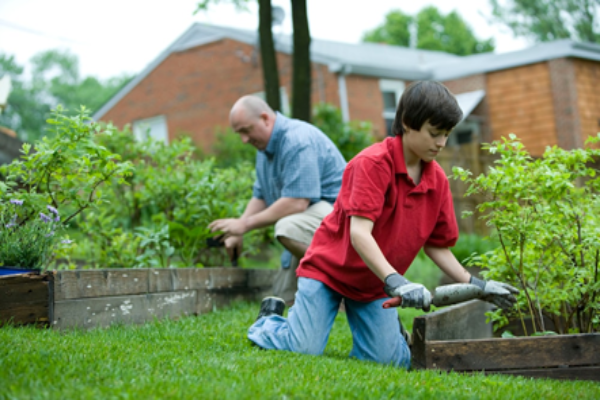
If you want to blanch the celery stems, return to the planting part and choose your favourite technique. The mounding or trenching approach can be the most useful and organic. However, there are also self-blanching types and the collar technique to consider.
Either dig a trench and plant in it or mound the soil. It is best to wait until the stems are at least one foot tall before blanching them. The next step is to work around the plant, lifting a couple of inches of earth to expose the roots. You must be mindful while doing this, as you may cause damage the stalks by stomping on them. Once every two weeks, hill your celery but make sure you never bury the growing tips or any of the leaves.
Growing Celery from Sowing to Harvest: Final Thoughts
Growing celery at home nearly always results in a better tasty crop than the professionally cultivated celery sold in supermarkets and farmers’ markets. So, are you prepared to grow celery? You may get celery seeds in garden centres and on gardening websites. The majority are the simpler self-blanching or green kinds, but if you want more conventional trench varieties, you must go to bigger seed shops.
Crisp and cool, celery is a staple of every good salad. Its adaptability in the kitchen is shown by its use in various dishes, from soup to stew. It’s a terrific healthy snack since it’s low in calories and fattening and high in nutrients, antioxidants, and fibre. Naturally, home-grown celery is superior to store-bought celery in flavour and nutritional value. However, do you have anything in mind regarding the growing process of celery?
Frequently Asked Questions (FAQs)
In What Time Frame Can You Expect to Grow Your Celery?
The typical harvest time for celery is between 80 and 120 days in places where winters are harsh, and summers are short. Starting seeds within ten to twelve weeks before the last frost date is suggested.
Does Celery Regrow After Being Cut?
After being harvested, celery often continues to grow from its root system. Therefore, you should only clip the outer stalks, as you need them to get the most out of your harvesting opportunity. Increased growth and harvests are the results of this.
How Do You Recommend Growing Celery?
Celery thrives when it’s neither hot nor cold in your area. In regions where summers are mild, planting celery seeds in March will provide harvestable plants by mid- to early June. You should water and fertilise your celery every two weeks and space your plants 6-8 inches apart for optimal growth.
Does Celery Need Direct Sunlight?
Six to eight hours of sunshine daily is ideal for growing celery outdoors. However, plants might get stressed or less vigorous from too much shade.
Does Celery Regrowth Occur Annually?
Although it may survive as a biennial, celery is often cultivated annually. In many environments, celeries like ‘Chinese Pink’ may be grown year after year. If the roots are not disturbed, they will return the following year. European celery cultivars are particularly susceptible to damage from frost and must be replanted yearly.

